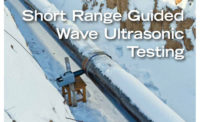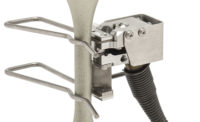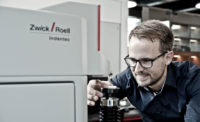At high-strain rates, the mechanism by which many materials deform is different from that experienced at lower rates, and many material properties are strain-rate sensitive. Consequently, quasi-static stress-strain data may not produce accurate predictions at high-strain rates, and the use of such data in the analysis and design of dynamically loaded structures can lead to designs of parts that are too heavy or prone to premature structural failure. It is essential that the material's deformation characteristics under high-strain conditions are understood so the engineer can make appropriate design choices.
High-rate data may be generated using a variety of methods depending on the test-piece size and the energy or velocity demands of the test. Charpy impact pendulum machines employ an instrumented hammer that is swung into a notched square or rectangular section specimen bridged across a set of anvils positioned in the hammer path. This gives rise to specimen strain rates in the region of 10-1 to 100-1 (or, 10 to 100 strain per second) with resultant impact energies of up to 600 joules. Drop-weight impact testing machines employ a guided free falling or spring-assisted weight and puncture probe. These machines develop similar strain rates but are capable of generating impact energies of 60,000 joules. At the other end of the spectrum are Hopkinson Bars and Gas Guns that rely on force transmission by a gas pressure assisted rod or by actual projectile firing, using pressurized gases, to achieve strain rates of 300-1 to 100,000-1. The Hopkinson Bar, which uses miniature cylindrical test pieces, can develop energies of up to approximately 10 joules, while the Gas Gun can develop close to 600,000 joules. The energy potential of this device is akin to a 1-kilogram meteorite hitting the earth at almost 4,000 kilometers per hour.
More specific to the automotive industry is the catapult rig that has a sledge with attached components, such as steering wheels and seating, attached to the end of a hydraulic ram and accelerated into an obstacle to simulate specific crash conditions. Strain rates of 5,000-1 with associated impact energies of up to 80,000 joules may be achieved using such equipment.
Systems that are designed with servohydraulic test machines can combine simultaneous load and velocity performance of 100 kilonewtons at 20 meters per second. Some frames are capable of generating strain rates in the region of 1-1 to 1000-1 and impact energies of up to 10,000 joules, and can be used for conventional static and quasi-static tests. The frames can be configured for high-speed tension, bend and impact tests between -150 C and 600 C. With large oil accumulators driving the actuator piston, these systems are capable of performing constant velocity tests, a capability not available to other high rate testing devices, with the exception of the catapult rig. Test specimens and components may take a range of forms depending on the industry concerned. Suitable candidates for high-strain rate testing include seat belt webbing materials and fasteners, automotive body and dashboard components, forging alloy compression specimens and aircraft panel composite tensile specimens.
Volvo's Technological Development Corp. (Got¿org, Sweden) was aware of these advantages when a frame was purchased for use in its strength of materials' research and development laboratory. Volvo uses the frame for high-strain rate testing on tensile specimens and the output data is used as input for crash-simulation calculations. This is part of a collaborative research program with Volvo LV, the truck manufacturer, to investigate the properties of a number of steel grades used in automotive manufacturing. The system is used to test joined specimens, where the output data will provide insight into the strain-rate sensitivity of joints made with welds, rivets, adhesives and multiple combinations. The ability to crush test parts of structures and models to verify crash simulation calculations will form another major part of Volvo's investigations. If accurate results can be obtained from high-strain rate test data and computational models, the need to conduct expensive crash tests may be significantly reduced.
In developing Volvo's test frame, engineers had to overcome many practical engineering problems associated with the mechanical elements of the rig and the basic control strategy that allows controlled tests to be carried out at velocities of up to 20 meters per second. Conventional servo-hydraulic test machines run under closed-loop control, using a feedback signal from a position linear variable differential transformer, loadcell or other transducer to close the control loop. Some systems require the actuator to be pre-accelerated to the desired velocity prior to load impact and the total test may last only 20 to 50 milliseconds. Operating under closed-loop control under such conditions is possible, but the actual velocity achieved will lag the desired velocity by a considerable margin, resulting in the necessity for long actuator strokes. Running the system in open-loop control using high-flow proportional valves and custom test-control software can reduce acceleration Arial, resulting in a shorter actuator stroke and greater actuator and oil-column stiffness. Software can be used to set up data-logging parameters for test data that is collected on up to four transducer channels at sampling rates of up to 5 megahertz.
Another critical area in high-strain rate testing is system resonance. At the point of impact, all system components oscillate at a natural frequency, depending on their stiffness and mass. It is essential that dynamic components in the system be designed as light as possible to increase resonant frequency to a level at which vibrations may be filtered out, typically 6,000 to 8,000 hertz. Conventional strain-gaged loadcells are susceptible to these effects and tend to "ring" like a bell. This is countered by the use of high stiffness piezo-electric loadcells and associated conditioning electronics, which are addressed and calibrated with software. Further improvements may be made by direct strain-gaging of the specimen, a static calibration within the elastic limits of the material, effectively converting this into a miniature high stiffness loadcell unaffected by the resonance of other system components. This technique is most effective with round section specimens having a large cross sectional area ratio between the specimen shoulder and the gage length.
The mass of the gripping components and the hydraulic actuator driving them must be considered with respect to its inertia. This is true in the case of high-strain rate tensile testing, as it is impossible to produce instantaneous actuator velocities, which would allow the specimen to be gripped prior to test initiation. In such cases, it is essential for the actuator, with lower grip attached, to accelerate to the required test velocity before contacting the specimen.
The traditional method of achieving this is with lost-motion grips. In this design, the top grip is fairly conventional, consisting of a low-mass threaded adapter attached to the machine crosshead with a small-diameter pullrod. The lower grip is somewhat less conventional and consists of a low-mass flanged cylindrical grip body, or upper slackrod, which is attached to the lower part of the specimen, and a tubular component, or lower slackrod, that surrounds it.
With the actuator in motion, the lower grip assembly telescopes until the desired actuator velocity is achieved. A flange on the upper slackrod then contacts a reduced diameter within the lower slackrod, forcing the specimen into tension at high speed. While this design is suitable for materials exhibiting high strains to failure, it can be subject to bouncing as the upper slackrod is initially accelerated above the actuator velocity. Although this effect may be countered with damping materials, this can significantly reduce the specimen acceleration, which is in itself undesirable. One way to combat this is with a "Fastjaw" grip design. As with the lost motion grips, the top of the specimen is gripped conventionally using a low mass, high stiffness grip. The bottom of the specimen, which is extended in length, sits within a U-shaped lower grip where the jaw faces are preloaded through the use of pretensioning bolts, but are held apart until the required actuator velocity has been achieved. The jaws, which are of a single-piece design, then snap shut on the specimen, inducing a rapid acceleration with no risk of bouncing.
This obstacle is just one that today's new high-speed test frames are overcoming as they are being used in a wider range of test applications, including forge simulations, component testing and crash simulations.





